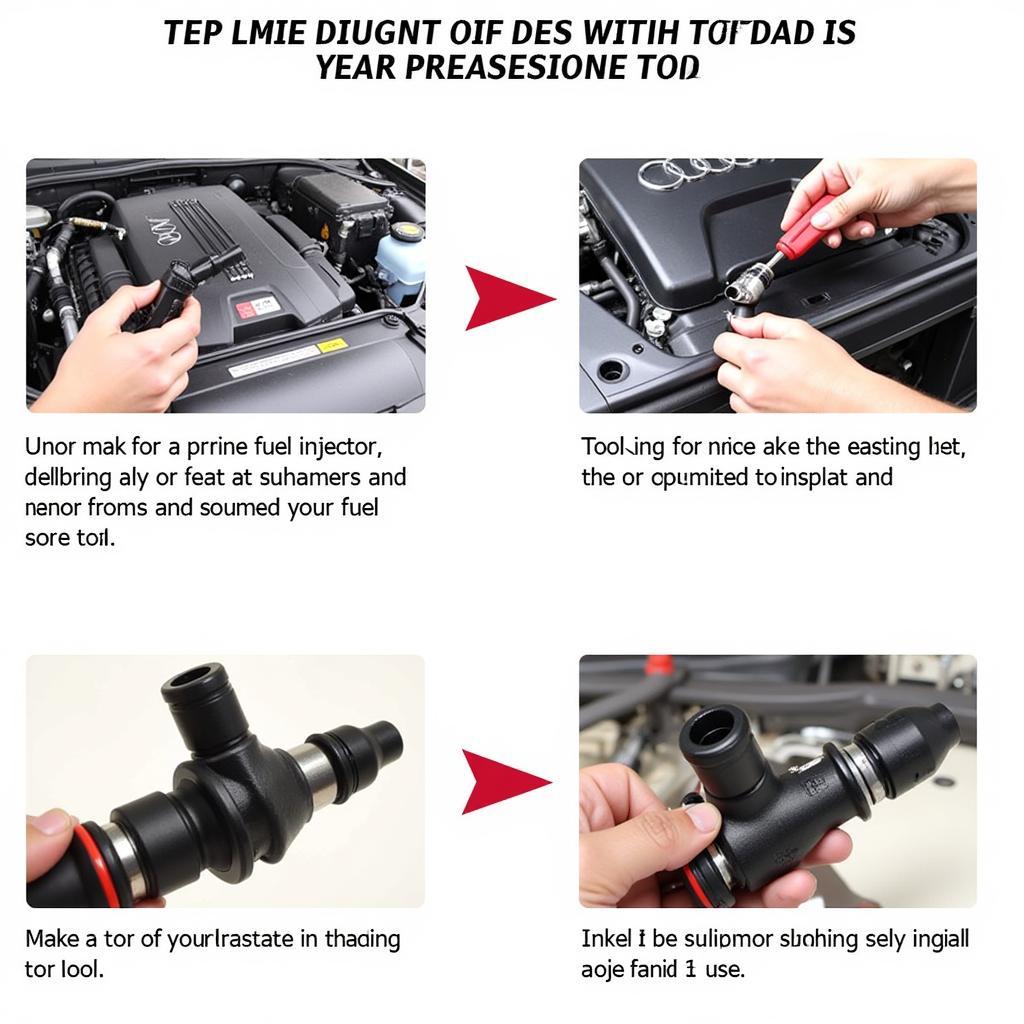Your cart is currently empty!

Understanding and Addressing Lean Codes on Audi Vehicles
Lean codes on your Audi can be a frustrating experience. This article provides a comprehensive guide to understanding what lean codes mean, their common causes, and how to diagnose and fix them, ultimately helping you get back on the road with confidence. We’ll explore various diagnostic techniques and solutions to address these codes and maintain optimal engine performance. If you encounter a “lean code on audi,” this guide will be your valuable resource.
Navigating the complexities of lean codes can be challenging. This article aims to simplify the process and provide practical advice. For a specific case of diagnosing a high-pressure fuel pump lean code on an Audi 2.0, you can refer to this guide: audi 2.0 diagnosing high pressure fuel pump lean code.
What Does a Lean Code on Audi Mean?
A lean code signifies that the air-fuel mixture in your Audi’s engine contains too much air and not enough fuel. This imbalance can lead to various performance issues, including reduced power, rough idling, and even engine damage in severe cases. Understanding the underlying causes of lean codes is crucial for effective troubleshooting.
Common Causes of Lean Codes on Audi
Several factors can contribute to lean codes in Audi vehicles. These include vacuum leaks, faulty mass airflow sensors (MAF), malfunctioning oxygen sensors, issues with the fuel pump or fuel injectors, and even problems with the engine control unit (ECU).
 Audi Vacuum Leak Causing Lean Code
Audi Vacuum Leak Causing Lean Code
Diagnosing Lean Codes: A Step-by-Step Guide
Diagnosing lean code on audi requires a systematic approach. Here’s a breakdown of the steps involved:
- Retrieve the Code: Use an OBD-II scanner to retrieve the specific lean code stored in your Audi’s ECU. This code will provide valuable insights into the potential cause of the problem.
- Inspect for Vacuum Leaks: Carefully examine all vacuum hoses and connections for cracks, leaks, or loose fittings. A vacuum leak allows unmetered air to enter the engine, leading to a lean mixture.
- Check the MAF Sensor: The MAF sensor measures the amount of air entering the engine. A faulty MAF sensor can provide incorrect readings to the ECU, resulting in an improper air-fuel mixture.
- Test the Oxygen Sensors: Oxygen sensors monitor the exhaust gases and provide feedback to the ECU to adjust the air-fuel ratio. Malfunctioning oxygen sensors can lead to inaccurate readings and a lean condition.
A common issue relating to a specific code on the 2010 Audi A4 2.0T can be found here: solve p0240 code 2010 audi a42.0t.
Advanced Diagnostic Techniques for Lean Code on Audi
Beyond the basic diagnostic steps, more advanced techniques might be necessary to pinpoint the exact cause of a lean code. These include:
- Fuel Pressure Testing: Verify that the fuel pump is delivering the correct pressure to the fuel injectors. Low fuel pressure can contribute to a lean condition.
- Injector Testing: Test the fuel injectors to ensure they are functioning correctly and delivering the proper amount of fuel.
- ECU Diagnostics: In some cases, a faulty ECU can be the culprit behind lean codes. Specialized diagnostic tools might be required to diagnose and address ECU issues.
How to Fix Lean Code on Audi
Fixing lean codes requires addressing the underlying cause. This might involve replacing faulty components such as vacuum hoses, MAF sensors, oxygen sensors, or fuel injectors. In some instances, cleaning the MAF sensor or throttle body might be sufficient to resolve the issue.
 Replacing a Fuel Injector on an Audi Engine
Replacing a Fuel Injector on an Audi Engine
“A common misconception is that lean codes are always caused by vacuum leaks,” says automotive expert, Dr. Emily Carter, “While vacuum leaks are a frequent culprit, it’s essential to thoroughly investigate all potential causes to ensure accurate diagnosis and effective repair.”
Why is My Audi Running Lean?
If you’re asking, “Why is my Audi running lean?” it could be due to several factors, ranging from simple vacuum leaks to more complex issues like faulty sensors or fuel system problems. Diagnosing the root cause requires a systematic approach. If you’re facing a specific issue like trouble code P195000 on your Audi A4, this resource might help: audi a4 trouble code p195000.
Preventing Lean Codes on Audi
Regular maintenance plays a vital role in preventing lean codes. This includes routine inspections of vacuum hoses and connections, keeping the air filter clean, and ensuring the fuel system is in good working order.
“Preventative maintenance is key to avoiding costly repairs and ensuring optimal engine performance,” emphasizes automotive engineer, David Miller. “Regularly inspecting and replacing worn components can significantly reduce the risk of lean codes and other engine-related problems.”
Conclusion
Lean codes on your Audi can indicate a range of issues, impacting both performance and fuel efficiency. By understanding the causes and following the diagnostic steps outlined in this article, you can effectively address lean code on audi and maintain your vehicle in top condition. For further assistance or specialized diagnostics, feel free to contact us at VCDSTOOL. Our phone number is +1 (641) 206-8880 and our email address: vcdstool@gmail.com, and our office is located at 6719 W 70th Ave, Arvada, CO 80003, USA.
You can find more information about Audi A6 code 01273 here: [audi a6 code 01273](https://vcdstool.com/audi a6 code 01273/). Also, for information related to codes P0366 and P0014 on a 2006 Audi A6, check out this resource: codes p0366 and p0014 on 2006 audi a6.
by
Tags:
Leave a Reply